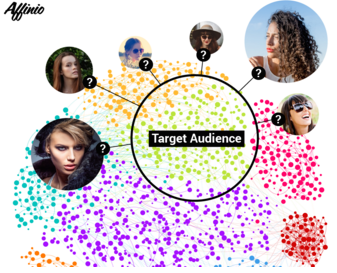Kim Kardashian – love her or hate her, you can’t deny that she’s created a massive empire and cult following. Having recently won the Council of Fashion Designers of America influencer award, Kim is truly one of the biggest influencers of our time. With 113 million Instagram followers (that’s the sixth most followed in the world) and 60.2 million followers on Twitter (that’s more than Donald Trump), she is truly the Queen of social media. What really catapulted Kim into fame? How does she maintain such a large following and influence despite an equally notorious reputation, and what can brands learn from her?
Know your audience
Kim brands herself around glam, beauty and luxury. In fact, all of her ventures now are centered around these themes. This is what her audience knows her for and it’s what they expect her to share with them and thus creates personalised content for them. Diverting from this may cause a scattered brand identity that people are unable to understand or follow and result in lower followership. This means keeping in mind integrated marketing communications – a single brand image across all platforms.
Also, always listen! People like to promote products, but Kim thinks it’s equally (if not more) important to listen as well. To engage with your audience makes them feel like you’ve taken their thoughts into consideration. For all you know, your audience just might be your inspiration for the next big campaign!
Capitalise on opportunities
Opportunities don’t always come in pretty packages. Kim once supported a morning sickness prevention brand once and got a lot of flak (even from the Food and Drug Administration!) for not posting the drug’s side effects. However, Kim managed to turn the situation around by taking ownership for her actions. This moment garnered a lot of publicity (negative or not) that made people more interested in Kim’s life.
It’s all about taking the opportunities that have the potential to help you build brand awareness. Kim’s #breaktheinternet moment with Paper magazine was unpaid but was something that created buzz about one of her most famous assets – her butt. If that’s not capitalising on opportunities, I don’t know what is!
Stay authentic
This is a sure way to prevent a PR disaster. When you’re that well known around the world, people will be watching your every step. Post something that’s not true to you and people will immediately catch wind of it. That’s why it’s important for you to endorse items and posts that are true to your brand identity to prevent backlash. Kim always promotes products that she herself loves and uses so that she knows she’s promoting a good product to her audience.
For example, the first product Kim launched from her beauty line was a contour kit. This was done with the vision that she wants to sell products she believes in and uses often. This works hand in hand with knowing her audience. Kim wanted to be able to sell her famous contour look to her audience, who look to her for beauty inspiration.
Use every platform
Different platforms have different strengths and Kim capitalises on that to maximise the use of different social media outlets. According to Kim, each platform has a purpose to serve.
Facebook is good for click-throughs, snapchat showcases more of your private side, Instagram is good for showing the actual product and twitter is good for having a conversation with people. Based on what you are trying to accomplish with your brand, it’s important to keep this in mind while curating social media posts and do what will work best with your audience and keep them engaged.
Still not sure how to create content for your brand? Check out some tips here on how to create digital marketing gold.
Want to break the Internet like Kim? Drop us a message at [email protected]



